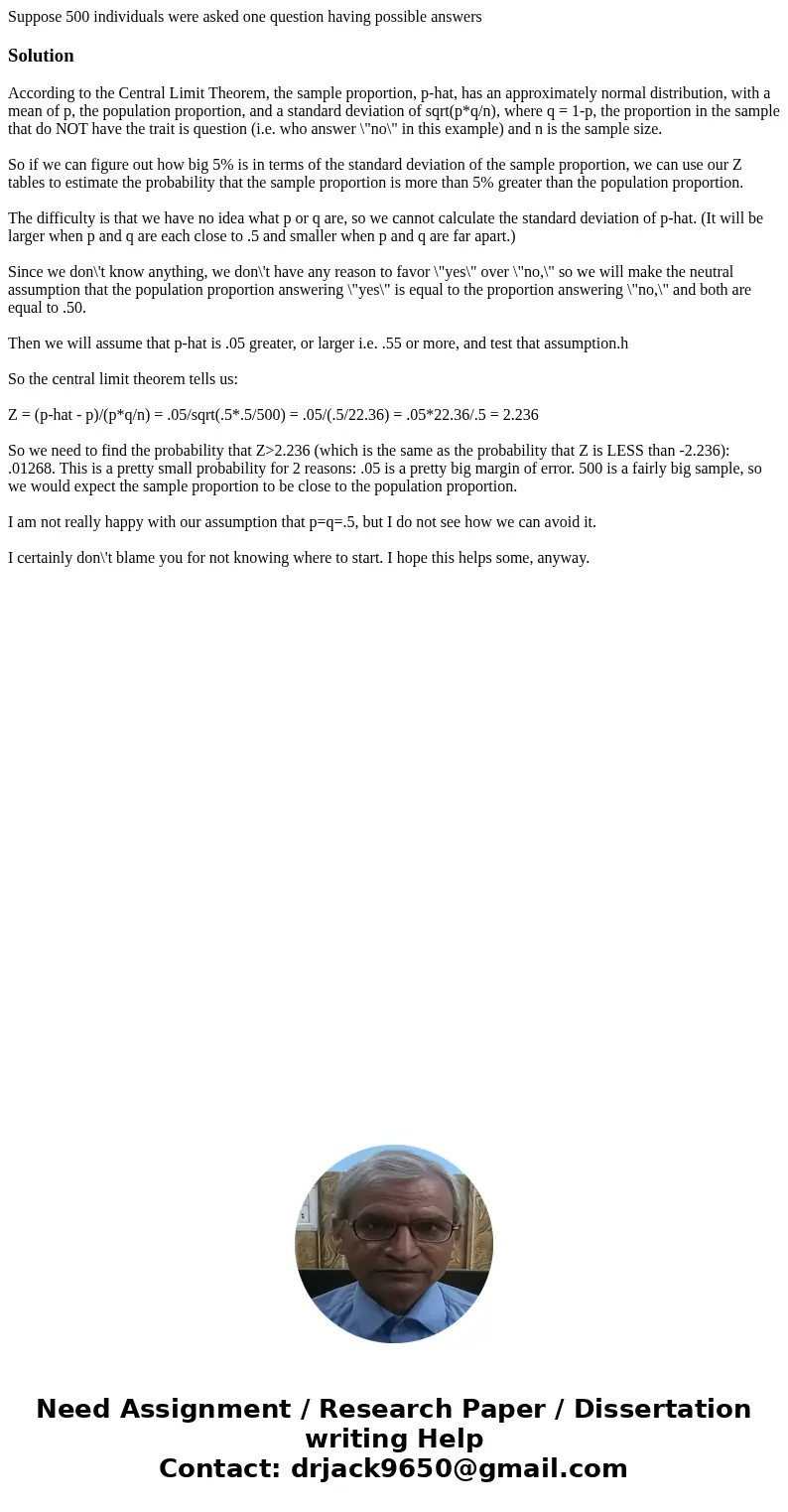Suppose 500 individuals were asked one question having possi
Suppose 500 individuals were asked one question having possible answers
Solution
According to the Central Limit Theorem, the sample proportion, p-hat, has an approximately normal distribution, with a mean of p, the population proportion, and a standard deviation of sqrt(p*q/n), where q = 1-p, the proportion in the sample that do NOT have the trait is question (i.e. who answer \"no\" in this example) and n is the sample size.
So if we can figure out how big 5% is in terms of the standard deviation of the sample proportion, we can use our Z tables to estimate the probability that the sample proportion is more than 5% greater than the population proportion.
The difficulty is that we have no idea what p or q are, so we cannot calculate the standard deviation of p-hat. (It will be larger when p and q are each close to .5 and smaller when p and q are far apart.)
Since we don\'t know anything, we don\'t have any reason to favor \"yes\" over \"no,\" so we will make the neutral assumption that the population proportion answering \"yes\" is equal to the proportion answering \"no,\" and both are equal to .50.
Then we will assume that p-hat is .05 greater, or larger i.e. .55 or more, and test that assumption.h
So the central limit theorem tells us:
Z = (p-hat - p)/(p*q/n) = .05/sqrt(.5*.5/500) = .05/(.5/22.36) = .05*22.36/.5 = 2.236
So we need to find the probability that Z>2.236 (which is the same as the probability that Z is LESS than -2.236): .01268. This is a pretty small probability for 2 reasons: .05 is a pretty big margin of error. 500 is a fairly big sample, so we would expect the sample proportion to be close to the population proportion.
I am not really happy with our assumption that p=q=.5, but I do not see how we can avoid it.
I certainly don\'t blame you for not knowing where to start. I hope this helps some, anyway.

 Homework Sourse
Homework Sourse